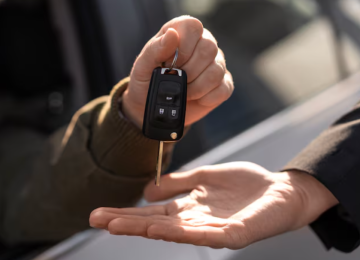
Choosing the right bike tyre for off-road adventures can mean the difference between conquering challenging trails and getting stuck halfway up a muddy incline. Your tyre selection directly impacts grip, control, and safety when you venture beyond tarmac roads. Before you invest in new off-road rubber, understanding key features helps you make an informed decision that matches your riding style and terrain preferences.
Construction Quality and Durability Features
Robust construction separates quality off-road tyres from budget options that fail prematurely. Your focus should extend beyond the tread pattern to examine sidewall strength and overall build quality.
Sidewall Technology and Protection
Reinforced sidewalls shield against sharp rocks and lateral impacts that commonly damage tyres during technical riding. Look for features like:
| Feature | Benefit | Ideal Terrain |
| Double-layer sidewalls | Maximum puncture resistance | Rocky trails |
| Flexible single-layer | Better ride comfort | Sandy/muddy paths |
| Kevlar reinforcement | Lightweight protection | All conditions |
Higher ply ratings indicate stronger construction but add weight. A 4-ply rated tyre offers excellent durability for aggressive riding, while 2-ply options suit riders prioritising agility. The sidewall profile number (65, 70, or 75) represents the height-to-width ratio, with taller sidewalls providing extra cushioning against impacts.
Compound Selection Impacts
Rubber compound directly affects both grip levels and longevity. Softer compounds stick like glue to surfaces but wear faster, particularly on abrasive terrain. Harder compounds sacrifice some traction for extended service life. Premium manufacturers often use dual-compound designs, placing softer rubber on the shoulders for cornering grip while using harder material in the centre for durability.
Temperature performance becomes crucial across India’s diverse climate zones. Quality compounds maintain consistent grip whether riding through Rajasthan’s heat or tackling cooler mountain passes. Budget tyres often struggle with temperature extremes, becoming either too soft or excessively hard.
Sizing Specifications and Compatibility
Correct sizing ensures safety and optimal performance. Never compromise on proper fitment, regardless of potential tyre price savings or deals you might find.
Understanding Size Markings
Off-road tyre sizes follow standardised marking systems. A typical designation like 90/100-21 indicates:
- 90: Tyre width in millimetres
- 100: Aspect ratio (sidewall height as percentage of width)
- 21: Rim diameter in inches
Your motorcycle manual specifies approved sizes. Deviating affects handling, ground clearance, and speedometer accuracy. Wider tyres increase flotation over soft surfaces but may rub against swingarms or chains. Narrower options cut through soft terrain better but offer less stability.
Tubeless Versus Tube-Type Options
Modern tubeless designs offer significant advantages for off-road use:
Tubeless Benefits:
- Run lower pressures without pinch-flat risks
- Self-sealing capabilities for small punctures
- Easier field repairs with plug kits
- Reduced rotating weight
Tube-Type Considerations:
- Lower initial Activa tyre price typically
- Simpler mounting process
- Readily available tubes for repairs
- Compatible with older rim designs
Many riders convert tube-type wheels to tubeless using conversion kits, though this requires careful installation to ensure proper sealing.
Brand Selection and Value Assessment

India’s off-road tyre market offers options spanning budget to premium segments. Established manufacturers like MRF, CEAT, and Eurogrip compete with international brands, each bringing unique strengths.
Price Versus Performance Analysis
Off-road bike tyre prices range from ₹2,500 to ₹13,500, reflecting varying technology levels. Premium tyres incorporate advanced features:
- Multi-compound construction
- Aramid fibre reinforcement
- Optimised tread patterns
- Extended warranty coverage
Budget options may seem attractive when comparing tyre price points, but frequent replacements often negate initial savings. Calculate cost per kilometre rather than upfront expense for accurate value assessment. For a commuter motorcycle or scooter like Hero Splendor and Honda Activa, tyre price is relatively low, but off-road motorcycle tyres are usually pricier in comparison.
Regional Availability Considerations
Major cities stock extensive selections, while remote areas may require advance ordering. Eurogrip maintains strong distribution networks across India, ensuring replacement availability even in smaller towns. This accessibility proves valuable during tours when unexpected tyre damage occurs far from major centres.
After-sales support varies significantly between brands. Comprehensive warranties and responsive customer service justify slightly higher initial investments, particularly for riders frequently venturing into challenging terrain.
Making Your Final Decision
Successful off-road bike tyre selection balances multiple factors against your specific requirements and budget constraints. Your riding style influences priorities. Aggressive riders benefit from maximum grip and durability, justifying higher investments. Casual trail explorers might find mid-range options perfectly adequate. Consider your skill progression too – beginning riders often outgrow entry-level tyres quickly as abilities improve.
Factor in total ownership costs beyond initial tyre price comparisons. Quality tyres delivering 15,000 kilometres of reliable service are more economical than budget alternatives that require frequent replacement. The confidence inspired by dependable tyres enables you to tackle challenging terrain safely, accelerating skill development.










